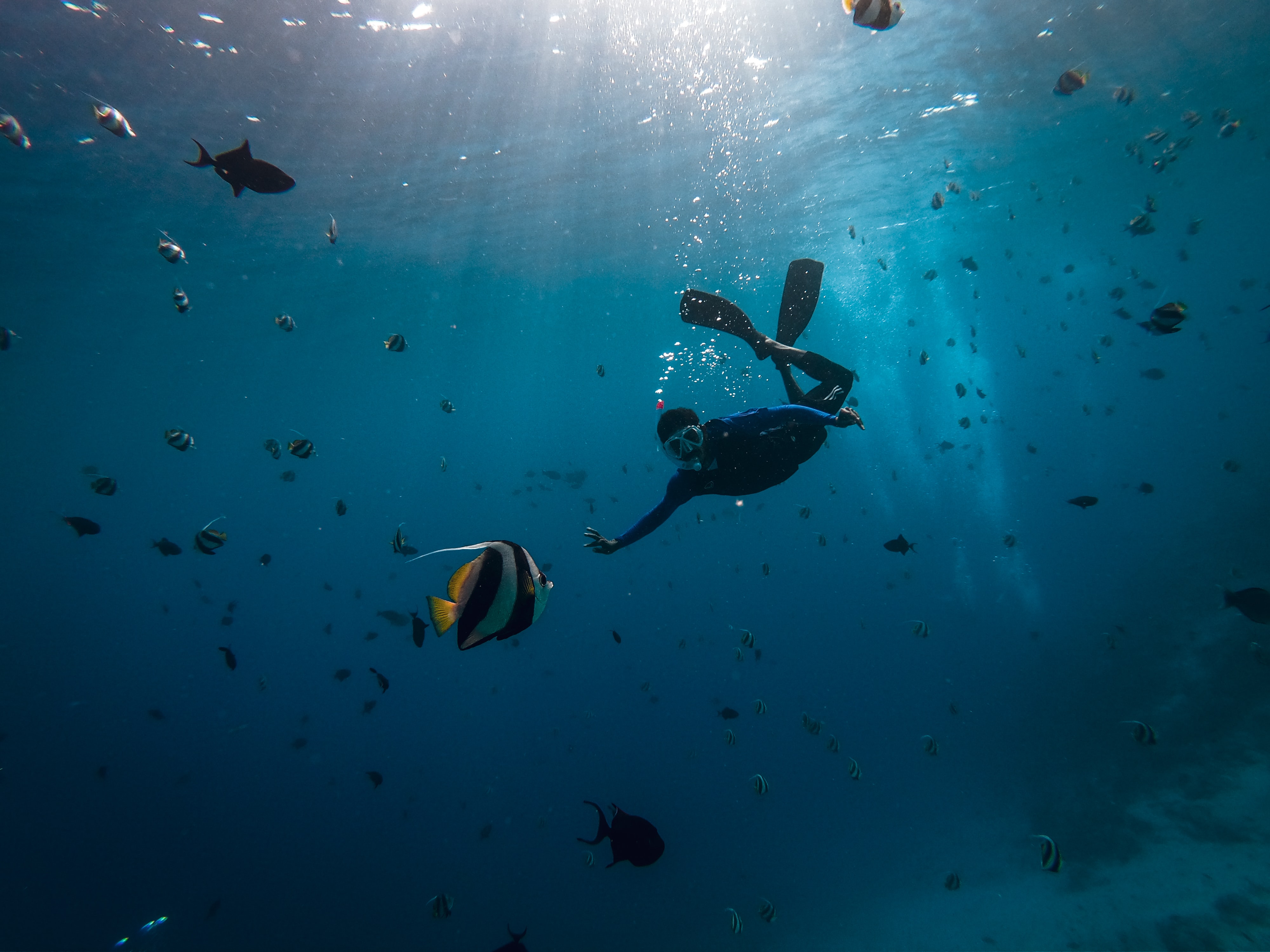5 reasons you should care about our ocean | United Nations


5 Reasons You Should Care About Our Ocean

1. The Ocean Regulates Our Climate and Provides the Air We Breathe
- Our ocean mitigates non-renewable industry pollution by absorbing 25 per cent of all carbon emissions, while generating 50 per cent of the oxygen we need to survive. It functions as the lungs of the planet, providing us with the air we breathe and helping to combat the negative impacts of climate change.
- The ocean has taken up more than 90 per cent of the excess heat in the climate system, helping to regulate temperatures on land.
- Climate action depends on a healthy ocean, and a healthy ocean requires urgent climate action.
2. The Ocean Feeds Us
- The ocean and its biodiversity provide our global community with 15 per cent of the animal protein we eat.
- In least developed countries, seafood is the primary source of protein for over 50 per cent of the population.
- It is critical to protect the ocean’s biodiversity and practice sustainable fishing strategies for continued consumption.
- Currently, more than 10 million tons of fish go to waste every year because of destructive fishing practices.
- Without significant change, UNESCO predicts more than 50 per cent of the world’s marine species may face extinction by 2100.
3. It Provides Jobs and Livelihoods
- The ocean provides livelihoods to 3 billion people, nearly 50 per cent of the entire global population.
- Marine fisheries provide 57 million jobs globally.
- The blue economy is a strong industry that allows many to make their living and provide for their families.
- Over 60 per cent of the world’s major marine ecosystems that underpin these livelihoods are being used unsustainably, with a significant portion being completely degraded.
- Pollution from the 11 million tons of plastic that enters the ocean annually costs an estimated US $13 billion, including clean-up costs and financial losses from fisheries and additional ocean-based industries.
- It is critical that we stop polluting our ocean.
4. The Ocean is a Tool for Economic Development
- Ocean economies are among the most rapidly growing in the world.
- The market value of marine and coastal resources and the developing industry is estimated to be US $3 trillion per year, which is about 5 per cent of total global gross domestic product.
- Developing countries’ access to the ocean and shorelines allow them to develop and attract foreign direct investments and direct industry production within the state.
- 80 per cent of tourism happens in coastal areas.
- The ocean-related tourism industry grows an estimated US $134 billion every year.
- The loss of tourism due to coral bleaching alone is as much as $12 billion annually.
- With ocean levels rising as the temperature of our planet increases, coastline-specific tourism and energy industries are at risk along with the 680 million people who live in low-lying coastal areas, a number that is expected to rise to one billion by 2050.
5. We Need a Healthy Ocean to Survive
- The ocean affects us all in positive ways, providing climate regulation, food, jobs, livelihoods, and economic progress.
- We must work together to protect and save the ocean for the sake of our future survival on this planet.
To learn more about the state of our ocean and what you can do today to help, visit the 2022 UN Ocean Conference website. Make your voluntary commitments here to save our ocean and follow the Conference taking place in Lisbon, Portugal, from 27 June to 1 July 2022, live via UN Web TV.
SDGs, Targets, and Indicators
| SDGs | Targets | Indicators |
|---|---|---|
| SDG 13: Climate Action | Target 13.3: Improve education, awareness-raising, and human and institutional capacity on climate change mitigation, adaptation, impact reduction, and early warning | Indicator not mentioned in the article |
| SDG 14: Life Below Water | Target 14.2: Sustainably manage and protect marine and coastal ecosystems to avoid significant adverse impacts, including by strengthening their resilience, and take action for their restoration in order to achieve healthy and productive oceans | Indicator not mentioned in the article |
| SDG 14: Life Below Water | Target 14.4: By 2020, effectively regulate harvesting and end overfishing, illegal, unreported, and unregulated (IUU) fishing, and destructive fishing practices and implement science-based management plans, to restore fish stocks in the shortest time feasible, at least to levels that can produce maximum sustainable yield as determined by their biological characteristics | Indicator not mentioned in the article |
| SDG 14: Life Below Water | Target 14.7: By 2030, increase the economic benefits to small island developing states and least developed countries from the sustainable use of marine resources, including through sustainable management of fisheries, aquaculture, and tourism | Indicator not mentioned in the article |
| SDG 14: Life Below Water | Target 14.a: Increase scientific knowledge, develop research capacity, and transfer marine technology, taking into account the Intergovernmental Oceanographic Commission Criteria and Guidelines on the Transfer of Marine Technology, in order to improve ocean health and to enhance the contribution of marine biodiversity to the development of developing countries, in particular small island developing states and least developed countries | Indicator not mentioned in the article |
| SDG 14: Life Below Water | Target 14.b: Provide access for small-scale artisanal fishers to marine resources and markets | Indicator not mentioned in the article |
| SDG 14: Life Below Water | Target 14.c: Enhance the conservation and sustainable use of oceans and their resources by implementing international law as reflected in UNCLOS, which provides the legal framework for the conservation and sustainable use of oceans and their resources, as recalled in paragraph 158 of The Future We Want | Indicator not mentioned in the article |
| SDG 15: Life on Land | Target 15.1: By 2020, ensure the conservation, restoration, and sustainable use of terrestrial and inland freshwater ecosystems and their services, in particular forests, wetlands, mountains, and drylands, in line with obligations under international agreements | Indicator not mentioned in the article |
| SDG 15: Life on Land | Target 15.5: Take urgent and significant action to reduce the degradation of natural habitats, halt the loss of biodiversity, and, by 2020, protect and prevent the extinction of threatened species | Indicator not mentioned in the article |
| SDG 15: Life on Land | Target 15.9: By 2020, integrate ecosystem and biodiversity values into national and local planning, development processes, poverty reduction strategies, and accounts | Indicator not mentioned in the article |
| SDG 15: Life on Land | Target 15.c: Enhance global support for efforts to combat poaching and trafficking of protected species, including by increasing the capacity of local communities to pursue sustainable livelihood opportunities | Indicator not mentioned in the article |
Source: un.org








